
Chassis dynos often reveal there is hidden potential in your package. But to get there, the car should be properly prepared before it ever climbs up on the roller(s). That’s Andy Wicks in the foreground watching the Schwartz Performance-built ’71 Raybestos Camaro on the dyno. This was the first test of this Camaro at the Car Craft Summer Nationals on the PowerHouse chassis dyno. The Schwartz-built 427ci LS cranked out an impressive 581 RWHP.
By Jeff Smith
Photos: Jeff Smith and Steve Brule’
A long time ago I was Shanghai’d into a ski trip despite the fact that I didn’t even know how to stand on skis without falling down. I decided to take the bunny class, but after the first few minutes the instructor admitted “Man, you have two left feet. I might not be able teach you how to ski by the end of the day – but what I can at least do is teach you how to look like you know how to ski.”
He showed me how to stand at just the right jaunty angle with my ski poles dug into the snow – and just stand there. “As long as you don’t move people will think you know what you’re doing.”
The point of this is that even if you don’t know how to tune your car, at least when you go to the chassis dyno shop you can be prepared enough to look like you know what you’re doing. That will automatically put you among the top ten percent of guys who show up at a chassis dyno facility. Spending a little time preparing for that dyno session will be rewarded by not wasting time (and money) fixing obvious problems. This frees the dyno tuner to do what you’re paying him to do — tune your car. It’s simple, but you might be surprised at how unprepared many cars are for a day on the dyno.
Preparation
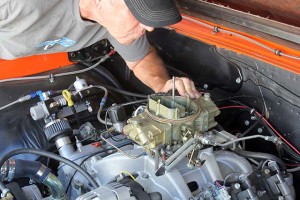
The simplest and yet most often overlooked step to making good power is to check that the throttle linkage is actually producing true wide-open throttle (WOT). This is a two-person job – one to mash the throttle pedal and the second to check if the throttle blades are in fact wide open. Do we need to mention that the engine is off when performing this test?
Just like spending the time to measure bearing clearances prior to engine assembly, or sanding that quarter panel until it is mirror smooth and ready for paint, preparation is the key to a successful dyno session. This story is all about preparing your car to successfully survive a dyno session. We interviewed two chassis dyno tuners who have years of experience running chassis dynos and tuning vehicles to determine the more common mistakes that many customers make.
We’ve known Andy Wicks, owner of Dyno Tune USA in Watertown, South Dakota for years. He has run well over 12,000 chassis dyno sessions, so he has the experience to back up his words. In other words, he’s seen all the classic screw-ups. So when he talks — we listen.
We also spoke with Eric Rhee who has years of experience tuning cars and has been with Westech Performance in Mira Loma, California, long enough to warrant his insight and recommendations for this story. The point of this exercise is to give you a leg up when it comes time to take your car to the chassis dyno.
The typical price for a chassis dyno session is between $100 and $150 per hour. This is expensive time, so it’s best to take full advantage of it. This begs the question why you would then want to spend $100 or more per hour to have somebody do work on your car when you could easily do the work yourself?
The answer to that question should be obvious. We’ve broken these recommendations into 10 easy ideas you can look over and see if any apply to your car. If you’ve got them all covered give yourself a hearty “Attaboy!” and load your car up and hit the chassis dyno. If not, it may be that you know what you’ll be doing this weekend!
1. Basic Maintenance

Both of our dyno experts mentioned that it’s essential the engine has the right style of spark plug for the engine and that the plugs are new and are the correct heat range. There are at least a dozen variables to proper spark plug application for a performance engine so if you’re not sure, ask your tuner to help with that selection.
This is probably the last thing you expected to read, but the brutal truth is that many cars that show up for a chassis dyno test are terribly unprepared. Let’s start with fuel. While good octane fuel sounds as basic as it gets, Andy tells us that it’s not uncommon for a performance car that has been sitting for six months to have stale fuel in the tank – or very little at all!
Likewise, the oil level in the engine, trans, and rearend all need to be maintained as does the cooling system. Eric tells us that he’s seen cars show up with near-dead batteries where the car won’t start after rolling off the trailer. Imagine how embarrassing that would be, paying $150 an hour to wait for the battery charger to pump up your dead battery. Other issues are poor battery cables and improper grounds that could easily be repaired ahead of time. Accessory drive belts are another easy thing to replace before you hit the rollers.
Andy tells us that he now always checks the condition and build date on the rear tires on cars that make even mild horsepower. “We generally spin these tires well up over 100 mph,” Andy says. “On the street if a tire blows, you might get lucky and drive away from the pieces. But on the dyno, that can get somebody hurt. That’s why we check the tires now. We can’t take that risk anymore.”
This also applies to tire condition. Older tires tend to dry rot with obvious cracks in the sidewall or in between the tread blocks. Even if the danger of injury is minimal, a tire exploding inside a rear wheelwell can do massive damage to priceless original sheetmetal. This makes the price of a new set of tires minor in comparison.
2. Check WOT
Now we can move into areas where you might be able to improve power. When was the last time you checked to make sure the carburetor or throttle body is truly achieving wide-open throttle (WOT)? It sounds simple, but apparently this is an easy adjustment to overlook. So much so that this is the first thing chassis dyno operators check before running the car. You will need a friend to help you check this correctly.
Pull the air cleaner and anything else you need to be able visually look into the carburetor or throttle body bores. Now have your friend press the throttle pedal all the way down – with the engine not running, of course. Move the linkage and visually check to see if the throttle bores are all fully open.
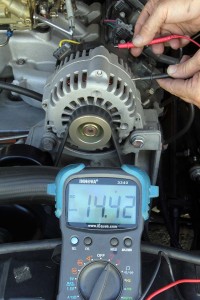
A simple voltage drop test can evaluate how well your charging system is working. With the engine at idle, measure the voltage at the back of the alternator. You are looking for a drop of less than 0.50-volt between the alternator and the battery. If the voltage at the battery reveals more than a 0.50-volt loss, there is resistance in the charging circuit. Replace the main charging wire with larger diameter and cleaner connections with less resistance. The alternator won’t have to work nearly as hard now to charge the battery.
A classic example of this oversight is a story that appeared several years ago in a national car magazine. We’ll omit the editor’s name to save him the embarrassment. He had noticed that his car wasn’t pulling the mph it should at the drag strip and assumed that it was due to a lack of fuel pressure – but he never checked the pressure before tearing into the car. He installed an expensive fuel delivery system and then delivered the car to Westech for a chassis dyno test.
When the first test delivered low numbers, Westech discovered that all four barrels on his carburetor were not fully opening because the linkage was improperly adjusted. After a quick adjustment, the engine immediately responded with a double-digit horsepower improvement. The engine really didn’t need the high-dollar fuel system, all it really needed was the throttle adjusted. According to both Wicks and Rhee, they see this all the time.
3. Fresh Spark Plugs
Before we get into spark plugs, answer this question: When was the last time you put spark plugs in your engine? If the plugs are more than a year old then you might want to at least bring along a fresh set. Wicks says that he often sees customers install the wrong spark plugs in their engine. It sounds silly, but here’s the scenario.
A relative newbie to high performance cars buys a Fox body Mustang and the 5.0 motor in his Mustang sports a set of TFS aluminum heads. He buys a set of spark plugs from his local Pep Boys and they give him a set of plugs for a stock 1988 5.0 Mustang. The plugs screw in, but they are not correct, and the installer fails to notice that his new tapered seat plugs have a much shorter thread compared to the correct plugs for the TFS heads that use a 0.750-inch long thread with a gasket seal.
With new but incorrect plugs, the engine will run poorly because the business end of the plug is buried deep inside the threads in the chamber. Andy says incorrect spark plug usage is a very common issue with roughly one in four cars he tests.
Of course, there’s a lot of ways to make mistakes with spark plugs, so do your research first. It’s far less expensive and you don’t look like a noob.
4. Verified Timing
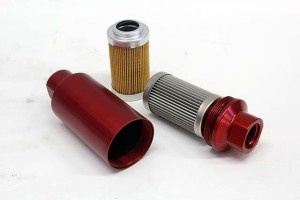
Another common problem that occurs is insufficient fuel pressure. Often, this can be solved just by checking the fuel filter. The filter’s job is to collect all that debris so it doesn’t clog up your carburetor or injectors. When was the last time you inspected your fuel filter?
Again, it sounds simple enough. Just put the timing light on the engine and read the numbers, right? Westech’s Rhee says almost half of the owners of modified carbureted street engines he tests do not have an accurate idea of where the total ignition timing is set. Wicks says his percentages may be are slightly lower than that, but he agrees that he often has cars on the dyno with incorrect timing, or no timing marks at all on the engine.
As an example, Rhee told us about a nice car in his shop that recently showed up with a 502ci Rat motor with a degreed balancer but no reference mark. The owner had replaced the timing chain cover with a billet piece that looked cool but had no reference mark. Rhee had to take the time to build a timing marker and accurately set TDC – all while the money clock was tickin’.
5. Driveline Issues
Wicks told us he had a customer that was pulling his car up on the dyno when he heard a u-joint squeaking. He asked the customer if he knew the u-joints were bad. The customer had heard the noise but appeared unconcerned. Much like the issues with old tires, at WOT in high gear the driveshaft is spinning engine speed.
That spinning mass creates a tremendous amount of stored energy. If you are standing a mere three or four feet away, pieces of a broken driveshaft can do all kinds of damage. “I’ve only lost five driveshafts in all the time I’ve been testing cars,” Wicks says, which puts this situation in with very low percentages. But that doesn’t mean you shouldn’t check. Wicks says, “We’re often doing 140 mph – what do you expect?”
It’s a good idea to address any vibration at speed that you might feel in the car when driving at highway speeds or above. We recently did a story on the Tremec Driveline Angle app for smartphones that explains how to determine the proper driveline operating angles. (You can see that story here.) This is a serious issue that can cause all kinds of dangerous vibrations if the drivetrain is improperly installed.
Wicks says that if the driveshaft is a bit too short with minimal spline engagement, it only takes a slight amount of driveshaft distortion to bend the shaft slightly, which could cause the slip yoke to bind up on the output shaft and cause massive carnage. You don’t want to be sitting in the driver’s seat when the driveshaft comes tearing through the floor. That’s why driveshaft loops are required in NHRA competition.
Wicks also told us that he has seen 10-plus hp gains on dirt track cars by establishing the proper pinion angle. Anytime the vehicle ride height changes, this directly affects pinion angle. That’s a tip you can put on your “Things to Do to My Car” checklist.
6. Carb Tuning
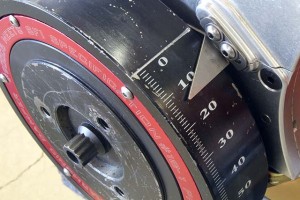
In order to set proper ignition timing, it’s critical that TDC is correct. Otherwise, all subsequent timing settings will be incorrect. The best situation is a single pointer reference with marks on the balancer. You don’t need an expensive degreed balancer to do this. MSD sells inexpensive timing tapes that make finding peak advance easy.
This is why you go to the chassis dyno in the first place, right? There’s money to be saved if you tune the air-fuel ratio to be close before you roll up on the dyno. You also don’t necessarily need a wide-band air-fuel ratio meter to do this, the procedure is simple.
Find a quiet, safe road where you can time third gear (in a four-speed) acceleration runs from 3,000 to 5,000 rpm. Test in both directions and do at least four runs to establish a baseline. Then try jets two steps richer (unless you know the engine is too rich already). Change the jets and retest. If the car accelerates quicker after averaging several runs then you are moving in the right direction.
All of this preparation reduces the amount of tuning that will be done on the chassis dyno and saves you money. Other recommendations include making sure the float level in the carburetor is properly set. Did you know that minor air-fuel ratio changes can be effected by raising or lowering the float level slightly? A slightly higher float level pushes slightly more fuel through the jets while lowering the float level has the opposite effect.
7. Fuel Filters, Fuel Pressure, and Fuelish Pleasures

Once TDC is found to be correct, the next step is to determine how much total ignition advance is controlled by the distributor. Changes can then be made to the springs and weights to adjust the curve. For street engines, maximum advance is all in by 2,500 rpm.
When was the last time you checked the condition of your car’s fuel filter? Again, it’s the little things that make a difference when you are trying to make horsepower.
Even with a good fuel pump, if the filter is partially plugged it’s not hard to lose a substantial amount of fuel pressure and not notice it. Reading the fuel pressure at idle with no load on the engine offers very little information other than whether the pump works. The true test is under load. That’s why you see drag racers with a fuel pressure gauge placed on the cowl in front of the windshield. They can use this to monitor fuel pressure while running down the track under full load.
A good pressure for a Holley carburetor is six psi. If the pressure drops below four psi, there may be a restriction in the system. Eliminate this as a variable and your dyno session will go more smoothly.
8. Advance Curves
This also falls under the heading of ignition, but in this case it has to do with distributors that may or may not be giving you everything you want.

The only way to accurately measure fuel pressure is under full load. This will require a gauge mounted on the cowl so it can be easily viewed while the engine is under full load. If you check this before you go to the dyno, it might save you some time.
According to Rhee, his experience with inexpensive distributors sold over the internet is that these cheap distributors offer too much mechanical advance. He says that several times he’s seen engines where the owner set the initial timing at 15 degrees and never checked the total advance. These budget distributors apparently have as much as 40 degrees of mechanical advance, which puts the total closer to 55 degrees. That’s too much by as much as 20 degrees!
Rhee says that the cost involved with modifying these distributors to radically reduce the amount of advance negates any savings the purchaser might have gained. The alternative, he says, is to purchase a high quality distributor from a name company like MSD, Pertronix, Crane, Davis Unified, FAST or another company rather than the cheap versions from overseas.
The opposite version of this situation is how MSD distributors are shipped. Because MSD does not know how the distributor will be used, all distributors are equipped with the largest (black) bushing which limits the total amount of mechanical advance to 18 degrees of mechanical advance. Plus, the distributors are also fitted with the heaviest and slowest advance springs so that maximum advance does not occur until after 3,500 rpm with the black bushing. So with an MSD distributor with 15 degrees initial timing, you’d have 33 degrees total with a stock MSD distributor – which is better than 55 degrees but probably not ideal.
9. Improper Grounds
Both Wicks and Rhee mentioned electrical issues among their Top Ten common problems. Within this arena, improper electrical grounds for items like electric cooling fans and electric fuel pumps are the most commonly discovered issues.
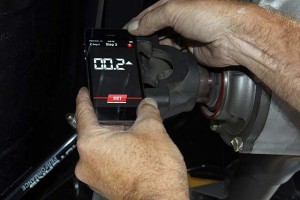
It’s not a bad idea to check your driveline angle to make sure the u-joint operating angles are within spec for both ends of the driveshaft. Tremec makes a free app for smartphones that will do the measuring and the math for you.
A typical mistake that we’ve seen played out dozens of times is mounting an electric fuel pump in the rear of the vehicle. A large, 8-gauge power wire is routed to the pump from a relay, which is fine. But then the installer uses a 14-gauge wire for a ground, locating the ground on the body panel next to the pump. There are several problems associated with this technique.
The best way to wire an electrical device like a fuel pump is to use the same large diameter wire on both the power feed and the ground. Secondly, ensure that the ground point minimizes resistance. Merely grounding the pump to sheetmetal without a direct path back to the battery will create internal resistance, which reduces the pump’s output. This greater resistance also affects pump durability since it now runs hotter. If you are unsure of a proper ground, you can perform a voltage drop test to determine the level of resistance.
10. Proper Attitude
While neither of my sources mentioned this, I’ve seen situations like this occur.
A car owner brings his car in for testing and the shop informs him that the car has several problems that will either limit the engine’s true potential or may prevent further testing. This is where the car owner’s ego gets in the way. The car owner perceives that the shop is criticizing his car and his work. This also occurs when the car does not make as much power as the owner assumed that it would and criticizes the shop for having an inaccurate dyno.
It’s important to remember that the shop you bring your car to wants you to have a positive experience because they want you to be a return customer. For the most parts, they probably have more experience in tuning cars than you do, so their information should be accepted as it is intended. Unfortunately, this means they often must inform you of problems with your car that are limiting its power potential.
These are observations intended to help you build a better car. How you respond to this input says more about you as a person. The bottom line is to take the shop’s recommendations, fix your car, and then return to measure the improvements. Both you and the shop will be happier with the results.
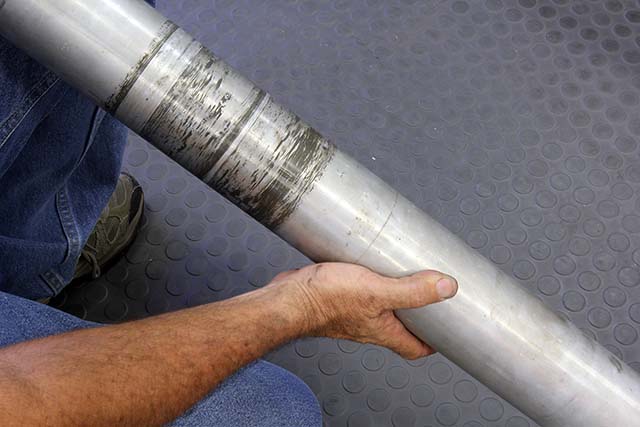
It’s also a good idea to check the condition of the u-joints and the driveshaft itself. This aluminum driveshaft has been in contact with the floorpan causing wear that makes it a candidate for the aluminum scrap bin.
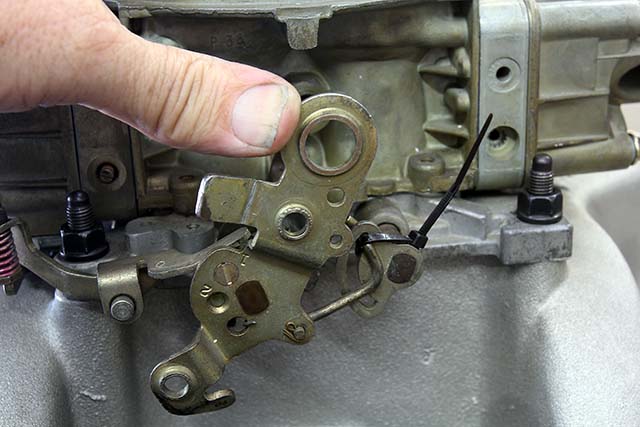
Westech’s Eric Rhee often sees Holley carburetors with very slow-opening vacuum secondaries. A quick fix to measure the difference in power is to zip-tie the primary side linkage to force the secondaries open with the primaries. This will cause a bog on the street, but it will work to ensure the secondaries fully open. Later, a softer spring can be added to the diaphragm.

Replacing vacuum secondary springs is a cumbersome job. That’s why Holley came out with these quick-change vacuum secondary lids. With two screws, you can change the secondary spring in about 30 seconds. This is a must-have time-saver.
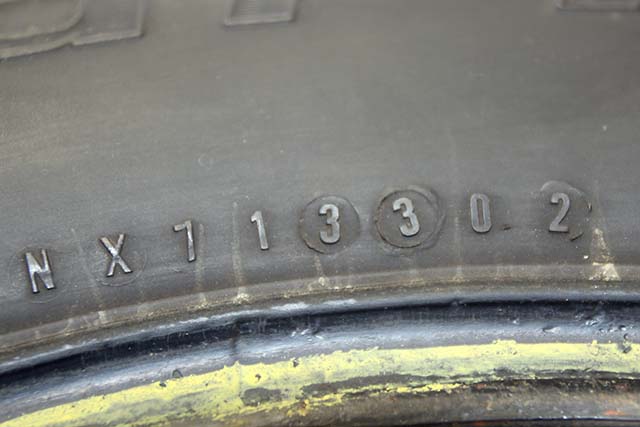
Rear tire condition is another crucial call. If your tires are more than six or seven years old and exhibit obvious dry rot cracks, spinning them up on the chassis to 140 mph may not be the smartest idea. Deciphering build date codes is easy on tires built after 2000. The first two numbers are the build week while the second two numbers are the year. In this case, the tire was built in the 33rd week of 2002, making it ancient and not a good candidate for a dyno test.

Among the more famous machines that have graced the rollers at Westech is the Big Red Camaro. In this photo, Steve Brule tells us that they were testing the cooling system for their “Elephant” engine, which is a 598ci big-block Chevy built by Larry Molliconi boosted by a crank-driven ProCharger centrifugal. It makes in excess of 1,800 hp! The Westech dyno is a true eddy current electric dyno and can capture 1,800 lb-ft of torque from those killer diesel trucks. Can you say oof-dah?
Sources
Dyno Tune USA
dynotuneusa.com
Westech Performance Group
westechperformance.com
















